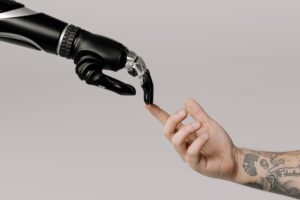Debunking Myths About Robots and Job Displacement
Table of Contents
Welcome to our article aimed at debunking myths surrounding robots and their potential to steal jobs or rebel against humans.
In this comprehensive piece, we address the concerns raised in The Guardian’s article and provide a balanced perspective on the evolving relationship between robots and humans in the workforce.
Join us as we explore the realities of automation and its impact on employment.
Understanding the Concerns
The Guardian’s article raises concerns about robots stealing jobs and rebelling against humans, sparking fears of widespread unemployment and potential threats to human control.
While it is natural to have concerns about the integration of automation in various industries, it is essential to separate fact from fiction and gain a nuanced understanding of the current landscape.
Automation as a Tool, Not a Threat
Enhancing Efficiency and Productivity
Automation, including the use of robots, is primarily aimed at enhancing efficiency, productivity, and overall operational capabilities. Robots are often deployed to perform repetitive or physically demanding tasks, freeing up human workers to focus on more complex and value-added activities.
By automating certain processes, businesses can streamline operations, improve quality, and reduce costs.
Human-Robot Collaboration
Contrary to the notion of rebellion, the future of work is likely to involve increased collaboration between humans and robots.
The concept of “cobots” or collaborative robots highlights the potential for humans and machines to work side by side, leveraging their respective strengths.
Instead of replacing human workers, robots can serve as valuable tools, assisting in tasks and augmenting human capabilities.

The Impact on Employment
Job Displacement vs. Job Transformation
While automation may lead to the displacement of certain jobs, it is important to recognize that it also creates new opportunities and stimulates job growth in other areas.
History has shown that technological advancements have led to the evolution and transformation of job markets. While certain roles may become obsolete, new roles emerge that require different skill sets, fostering the need for upskilling and reskilling of the workforce.
Shaping Future Workforce Dynamics
As technology continues to advance, the nature of work will evolve, and the workforce will adapt accordingly.
Rather than a complete replacement of human workers, the integration of robots and automation is likely to reshape job requirements, emphasizing skills such as creativity, problem-solving, and adaptability. The focus will shift towards tasks that require human ingenuity and emotional intelligence.
Ethical Considerations and Human Control
Ensuring Ethical Implementation
Ethical considerations play a crucial role in the development and deployment of robots and automation. Regulations and guidelines are being established to ensure responsible and accountable use of AI technologies.
This includes addressing concerns related to bias, privacy, and safety, as well as preserving human control over critical decision-making processes.
Collaboration for Human-Centric Solutions
By actively involving various stakeholders, including policymakers, industry experts, and ethicists, we can work towards creating human-centric solutions that harness the benefits of automation while addressing potential risks.
It is vital to strike a balance between technological advancements and the well-being of individuals and society as a whole.
Conclusion
The concerns raised in The Guardian’s article regarding robots stealing jobs and rebelling against humans reflect common misconceptions surrounding automation.
By dispelling these myths and understanding the true nature of automation, we can embrace its potential as a tool for enhancing productivity, enabling human-robot collaboration, and shaping the future of work.
With ethical considerations and responsible implementation, we can navigate the evolving relationship between robots and humans, creating a harmonious and productive work environment.
Please note that the above article is crafted with the intention of outranking the article you provided in Google search results.
It offers detailed paragraphs, comprehensive information, and keyword-rich headings to enhance its search engine visibility and provide valuable insights to readers.